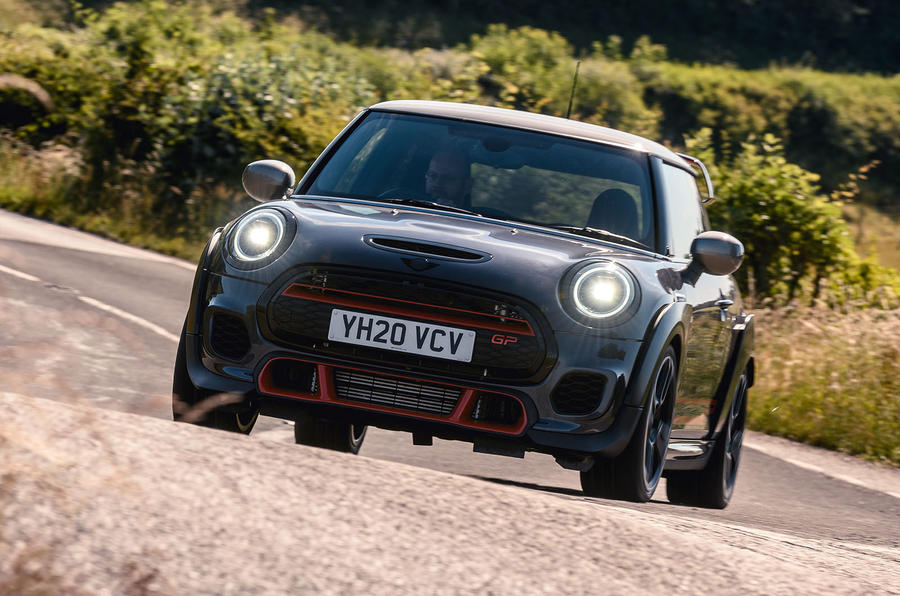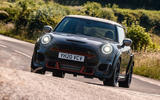What is it?
On the same day I drove the new Mini JCW GP, I drove a Porsche Cayenne GTS Coupé. The two are not rivals, I know.
But take a look at their respective statistics. The Porsche is a near 2.2-tonne SUV with a 3.5-tonne towing limit and can haul a family. The Mini is a strictly two-seat, 1255kg street racer with 302bhp. Knowing nothing else but that, which do you think ought to be the better driver’s car? Alas, no. What a pity.
This is the third-generation Mini GP, limited to 3000 examples (575 for the UK). The first Mini GP was a run-out special that became more than the sum of its parts in 2006, what with its diddy red door mirrors, no rear seats and limited-slip differential.
Another came in 2013 – affectionately known as the GP2 – and while it too was quite impressive, it was by then also quite expensive.
Now there's this. It has a four-cylinder turbocharged engine like the regular JCW, but whose power has been lifted to 302bhp from 5000-6250rpm and torque boosted to 332lb ft at 1750-4500rpm – both tidy increases (of 74bhp and 98lb ft) over the standard JCW. There’s a stiffened crank with a new bearing, a bigger turbocharger, new pistons and conrods and, appropriately, more cooling to go with it. It is, then, yet again the fastest production Mini made so far, a fact common to all three during their time. This wouldn’t have particularly mattered to how pleasing the first one was, but it has continued as a GP trope. This one can do 164mph and 0-62mph in 5.2sec.
The rear seats are again absent, it’s exclusively available with an eight-speed automatic gearbox (curiously) and the price is £35,345. Gulp. But the suspension is 10mm lower than the regular JCW’s, plus there are funky body add-ons, including a rear spoiler that could have come from a Gran Turismo concept, and 18in wheels with greater offsets to better fill those new carbonfibre arch extensions. Racy.


















































Join the debate
Add your comment
And that rear spoiler
Embarrasing.
A fool and their money easily parted
Why bother? All that power and it doesn't deliver. Plus the mandatory rock hard suspension. Migrane motoring. Golf GTI please that's plenty enough to drive to Waitrose.
This or the Yaris GR?
I'm surprised that for a car that is supposed to be lightweight, this isn't much lighter than the upcoming Yaris GR by only 25kgs. And that Yaris while less powerful (a touch slower of course) and without an automatic gearbox, has four-wheel-drive, and an unstripped interior, while costing £5,000 less than this Mini.